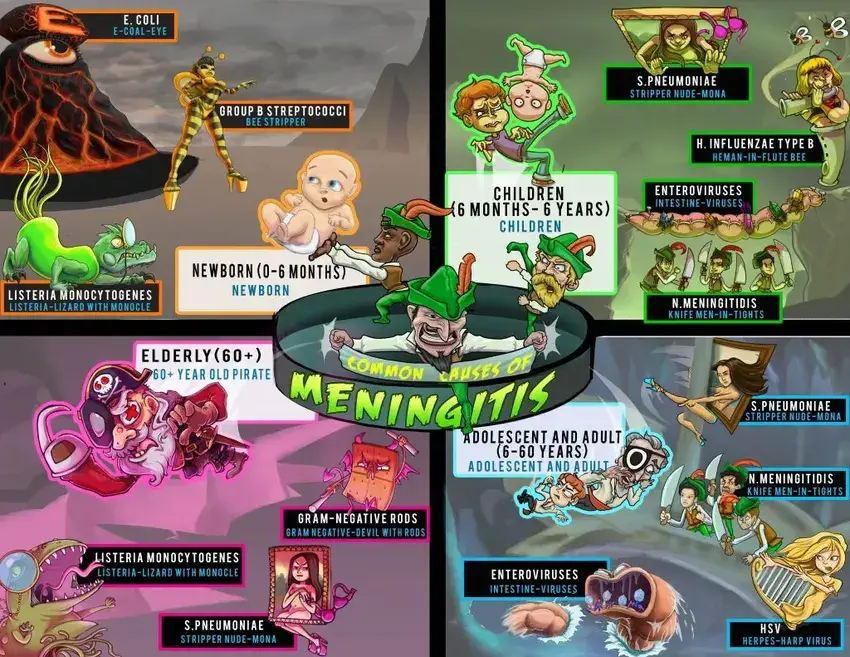This infographic covers the common causes of Meningitis and the age group they affect.

Some topics you will learn in this infographic:
E. Coli:
E. coli are another major cause of neonatal meningitis. “Neonatal meningitis-causing E. coli” have a capsule (called K1) which protects the bacteria from the innate immune system and allows it to penetrate the CSF. Furthermore, this capsule contains sialic acid, which does not set off the defenses of the body, because it is widely found in humans. Sialic acid also plays a role in the bacteria’s ability to invade through the blood-brain barrier.
Neisseria Meningitidis:
Neisseria meningitidis is spread through the aerosol route between children and has high infectivity. Risk factors for contracting this bacterial infection include preceding illnesses, along with being in close contacts with others, e.g. school or daycare.
Herpes Simplex Virus (HSV):
Primary Herpes simplex virus (HSV) has been increasingly recognized as a cause of viral meningitis in adults. Viral meningitis in immunocompetent adults is generally caused by HSV-2. Genital lesions are present in approximately 85 percent of patients with primary HSV-2 meningitis, and these generally precede the onset of CNS symptoms by seven days.
Gram-negative Rods:
Gram-negative bacillary meningitis is usually community-acquired and most frequently occurs in patients who are elderly or have underlying conditions, such as alcohol-induced cirrhosis, diabetes, malignancy, splenectomy, and glucocorticoid therapy. It also has a higher association with older patients who have urinary tract infections.
To learn more, get started with a free Picmonic account.













